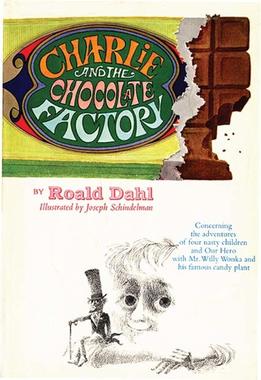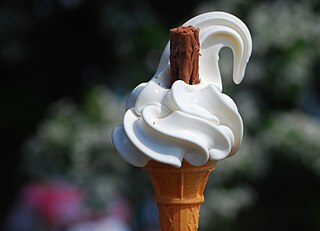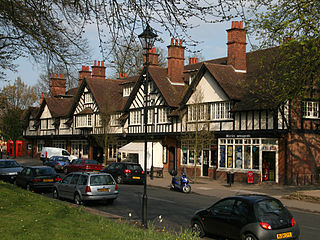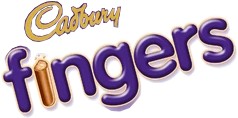
Aelbert Jacobszoon Cuyp was one of the leading Dutch Golden Age painters, producing mainly landscapes. The most famous of a family of painters, the pupil of his father, Jacob Gerritszoon Cuyp (1594–1651/52), he is especially known for his large views of Dutch riverside scenes in a golden early morning or late afternoon light. He was born and died in Dordrecht.

Cadbury, formerly Cadbury's and Cadbury Schweppes, is a British multinational confectionery company owned by Mondelez International since 2010. It is the second largest confectionery brand in the world after Mars. Cadbury is internationally headquartered in Greater London, and operates in more than 50 countries worldwide. It is known for its Dairy Milk chocolate, the Creme Egg and Roses selection box, and many other confectionery products. One of the best-known British brands, in 2013 The Daily Telegraph named Cadbury among Britain's most successful exports.

Charlie and the Chocolate Factory is a 1964 children's novel by British author Roald Dahl. The story features the adventures of young Charlie Bucket inside the chocolate factory of eccentric chocolatier Willy Wonka.

A 99 Flake, 99 or ninety-nine is an ice cream cone with a Cadbury Flake inserted in the ice cream. The term can also refer to the half-sized Cadbury-produced Flake bar, itself specially made for such ice cream cones, and to a wrapped product marketed by Cadbury “for ice cream and culinary use”.

Bournville is a model village on the southwest side of Birmingham, England, founded by the Quaker Cadbury family for employees at its Cadbury's factory, and designed to be a "garden" village where the sale of alcohol was forbidden. Cadbury's is well known for chocolate products – including a dark chocolate bar branded Bournville. Historically in northern Worcestershire, it is also a ward within the council constituency of Selly Oak and home to the Bournville Centre for Visual Arts. Bournville is known as one of the most desirable areas to live in the UK; research by the Joseph Rowntree Foundation in 2003 found that it was "one of the nicest places to live in Britain".

Aert van der Neer, or Aernout or Artus, was a landscape painter of the Dutch Golden Age, specializing in small night scenes lit only by moonlight and fires, and snowy winter landscapes, both often looking down a canal or river. He was a contemporary of Aelbert Cuyp and Meindert Hobbema, and like the latter he lived and died in comparative obscurity.

Cadbury Dairy Milk is a British brand of milk chocolate manufactured by Cadbury. It was introduced in the United Kingdom in June 1905 and now consists of a number of products. Every product in the Dairy Milk line is made with exclusively milk chocolate. In 2014, Dairy Milk was ranked the best-selling chocolate bar in the UK. It is manufactured and distributed by the Hershey Company in the United States under licence from Cadbury. The chocolate is now available in many countries, including China, India, Sri Lanka, Pakistan, the Philippines, Indonesia, Kazakhstan and Bangladesh.
Flake is a British brand of chocolate bar currently manufactured by British chocolate company Cadbury, owned by Mondelez International, consisting of thinly folded milk chocolate. The bar has a unique crumbly texture, and softens but does not melt when heated.

A Cadbury Creme Egg, originally named Fry's Creme Egg, is a chocolate confection produced in the shape of an egg. It originated from the British chocolatier Fry's in 1963 before being renamed by Cadbury in 1971. The product consists of a thick chocolate shell containing a sweet white and yellow filling that resembles fondant. The filling mimics the albumen and yolk of a soft boiled egg.

William Thomas Kinkade III was an American painter of popular realistic, pastoral, and idyllic subjects. He is notable for achieving success during his lifetime with the mass marketing of his work as printed reproductions and other licensed products by means of the Thomas Kinkade Company. According to Kinkade's company, one in every twenty American homes owned a copy of one of his paintings.

Dutch Golden Age painting is the painting of the Dutch Golden Age, a period in Dutch history roughly spanning the 17th century, during and after the later part of the Eighty Years' War (1568–1648) for Dutch independence.
Milk Tray is a brand of boxed chocolates currently manufactured by Cadbury. Introduced by Cadbury UK in 1915, it is one of the longest running brands in the confectioner's portfolio. Milk Tray is sold in Australia, Canada, Ireland, New Zealand, New York City, South Africa and the United Kingdom.

Richard Barnbrook is a British politician and a former member of the London Assembly. He was elected as a British National Party (BNP) list candidate in the 2008 election, though he resigned the BNP whip in August 2010 and subsequently sat as an independent. Barnbrook was a councillor, and leader (2006–08), then deputy leader (2008–10), of the BNP group on Barking and Dagenham London Borough Council. He represented Goresbrook ward. Barnbrook retired from politics in May 2012.

Fingers are a popular chocolate biscuit in the United Kingdom and Ireland which consists of a rod-shaped biscuit centre covered in chocolate. Fingers are produced at Burton's Biscuit Company in the United Kingdom and sold by Cadbury UK, and are distributed in markets around the world, including North and South America, Europe and Asia. Since March 2013, Cadbury Fingers have also been sold in Australia, with three different varieties available.

Paul Day is a British sculptor. His high-relief sculptures in terracotta, resin, and bronze have been exhibited widely in Europe and his work is known for its unusual approach to perspective.

Benjamin Gerritszoon Cuyp was a Dutch Golden Age landscape painter.

The Three Graces is a nearly life-size, figurative Carrara marble outdoor sculpture group located on the historic Oldfields estate on the campus of the Indianapolis Museum of Art (IMA), in Indianapolis, Indiana. The neoclassical marble sculpture depicts the Three Graces, minor goddesses of the Greco-Roman pantheon. The group consists of three women frontally oriented, standing in a row upon a base. The sculpture is modeled after a c. 1797 sculpture by Antonio Canova.

An Old Man and his Grandson is a ca. 1490 tempera painting by the Italian Renaissance artist Domenico Ghirlandaio. One of Ghirlandaio's best-known works, it is considered notable for its emotional poignancy. Its realism has been described as unique among the portraits of the Quattrocento.

Henry Thomas Cadbury-Brown RA was an English architect. He was educated at the Architecture Association where he was influenced by the architecture of Le Corbusier and Walter Gropius. After graduating he worked for architect Ernő Goldfinger and became his lifelong friend. He went on to set up his own successful practice.

Brick Factory at Tortosa is a 1909 oil on canvas painting by Pablo Picasso, which he created during a visit to Horta de Sant Joan in Catalonia. It depicts a landscape of a factory and palm trees, which are presented in a simplified, geometric style. The work belongs to Picasso's African Period and is considered a Proto-Cubist work. It is held in the collection of The State Hermitage Museum in Saint Petersburg.


















